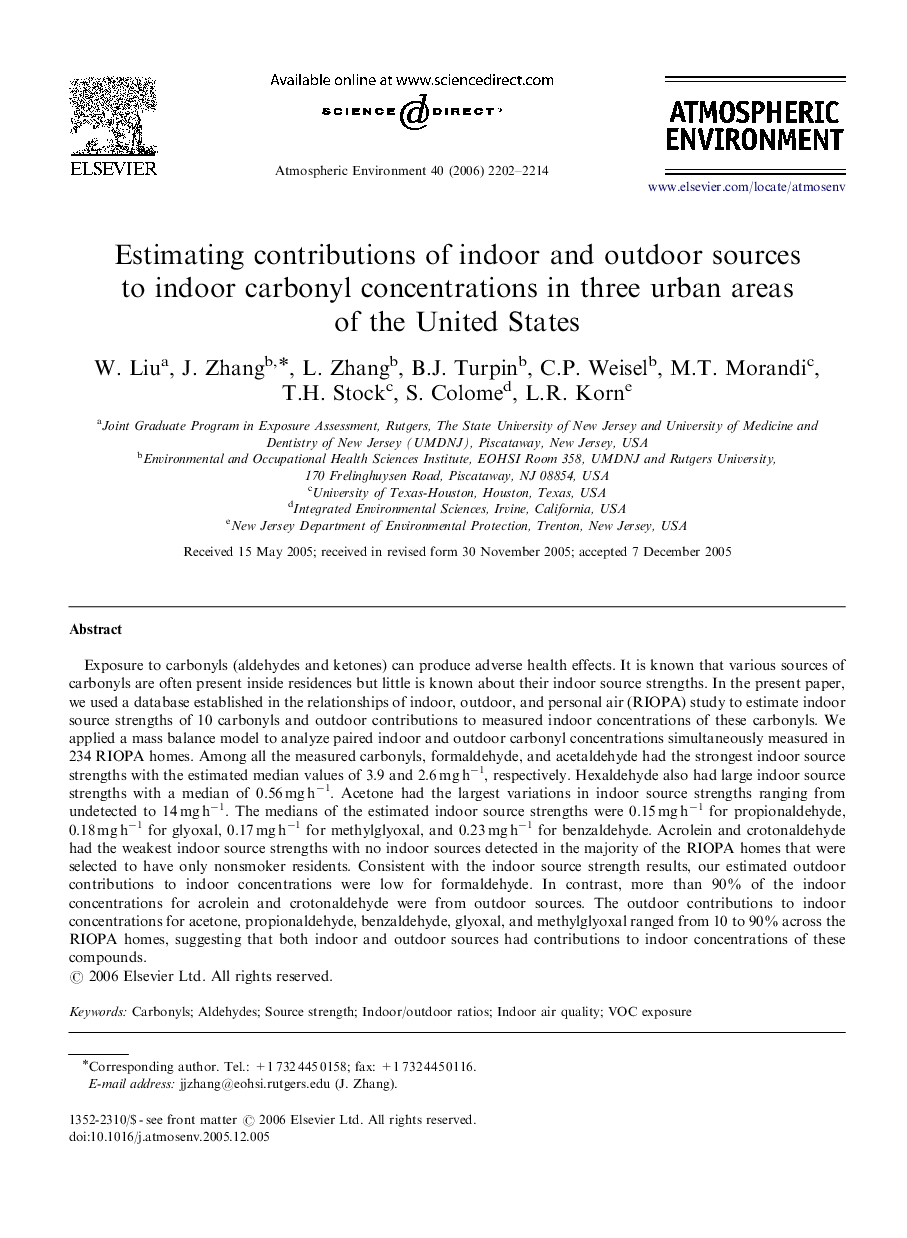| کد مقاله | کد نشریه | سال انتشار | مقاله انگلیسی | نسخه تمام متن |
|---|---|---|---|---|
| 4445066 | 1311267 | 2006 | 13 صفحه PDF | دانلود رایگان |

Exposure to carbonyls (aldehydes and ketones) can produce adverse health effects. It is known that various sources of carbonyls are often present inside residences but little is known about their indoor source strengths. In the present paper, we used a database established in the relationships of indoor, outdoor, and personal air (RIOPA) study to estimate indoor source strengths of 10 carbonyls and outdoor contributions to measured indoor concentrations of these carbonyls. We applied a mass balance model to analyze paired indoor and outdoor carbonyl concentrations simultaneously measured in 234 RIOPA homes. Among all the measured carbonyls, formaldehyde, and acetaldehyde had the strongest indoor source strengths with the estimated median values of 3.9 and 2.6 mg h−1, respectively. Hexaldehyde also had large indoor source strengths with a median of 0.56 mg h−1. Acetone had the largest variations in indoor source strengths ranging from undetected to 14 mg h−1. The medians of the estimated indoor source strengths were 0.15 mg h−1 for propionaldehyde, 0.18 mg h−1 for glyoxal, 0.17 mg h−1 for methylglyoxal, and 0.23 mg h−1 for benzaldehyde. Acrolein and crotonaldehyde had the weakest indoor source strengths with no indoor sources detected in the majority of the RIOPA homes that were selected to have only nonsmoker residents. Consistent with the indoor source strength results, our estimated outdoor contributions to indoor concentrations were low for formaldehyde. In contrast, more than 90% of the indoor concentrations for acrolein and crotonaldehyde were from outdoor sources. The outdoor contributions to indoor concentrations for acetone, propionaldehyde, benzaldehyde, glyoxal, and methylglyoxal ranged from 10 to 90% across the RIOPA homes, suggesting that both indoor and outdoor sources had contributions to indoor concentrations of these compounds.
Journal: Atmospheric Environment - Volume 40, Issue 12, April 2006, Pages 2202–2214